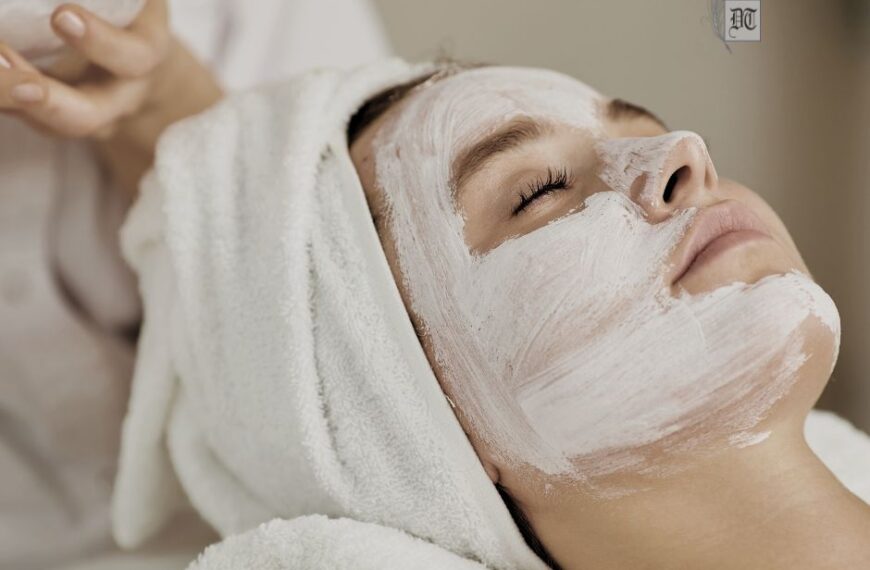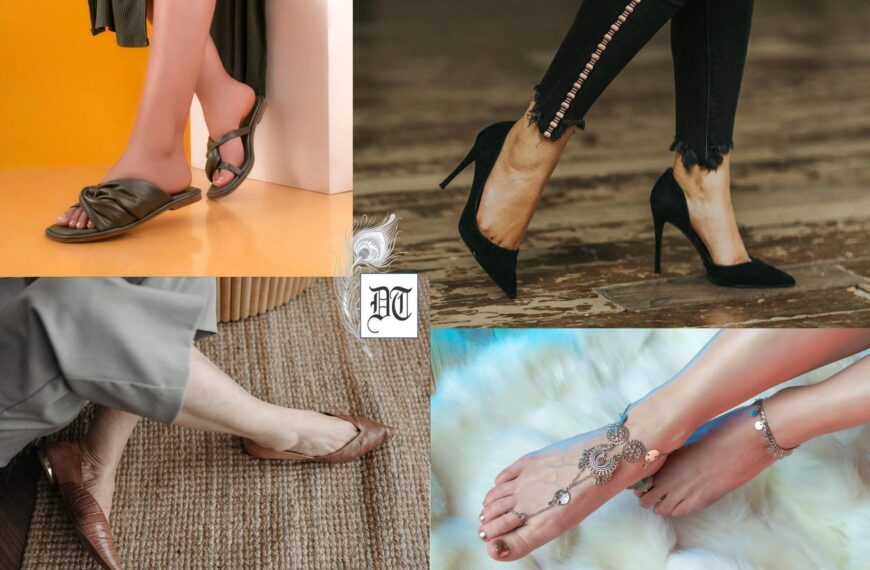Our fashionista, Kula Lumpur-based Shamina, delves into the history and traditions of tattoos, a primeval art form. She also sees its relevance as a contemporary style statement of an individual. Here’s her erudite, in-depth research, in the weekly column, exclusively in Different Truths.
Your necklace may break, the fau tree may burst, but my tattooing is indestructible. It is an everlasting gem that you will take into your grave. ~ Verse from a traditional tattoo artist’s song
Humans have marked their bodies with tattoos for thousands of years. These permanent designs — sometimes plain, sometimes elaborate, always personal — have served as amulets, status symbols, declarations of love, signs of religious beliefs, adornments and even forms of punishment.
Once relegated to the realm of the counterculture, the tattoo has become a ubiquitous presence in the fashion industry of late.
Some love tattoo and others deny it. There is no way, however, a person to disagree that the tattoo imparts individuality and “beautifies” every single body.
Many people put symbolic sense, but some people get tattoos simply for beauty. The tattoo very well characterises its owner, so in the choice, its meaning plays an important role.
History of Tattoo
The skin was the first canvas for art. Sticks and other pointy objects were the first paintbrushes. Tattooing was first a form of scarification. This involved wounding oneself and packing dirt or ashes into the scrape or cut to discolour it permanently. It is believed that prehistoric man cut holes in his skin, charred sticks in the fire, let them cool and then applied the black substance to the wound to create tribal markings.
As tattooing involved pain, blood and fire, primitive man believed the process released sacred life forces. The letting of blood was also associated with a sacrifice to the gods. The symbol or animal form of the tattoo was thought to bring one protection from attack from that very same animal.
Tattoos were also used to bring one’s soul in alignment with god’s purpose, increase virility and fertility, ensure the preservation of the body after the death and delineate hierarchies and roles within tribes. For instance, a tribal chieftain would have a very different tattoo than the individual in the tribe who was thought to bring them all bad luck.
Tattooing in ancient history was a funereal art. Images of tattooing are found on Egyptian female figurines that are dated between 4000 and 2000 years BC. Libyan figures from the tomb of Seti (1330 B.C.) also boast figures with tattoo markings on the arms and the legs.
Such tattoos were the mark of prostitutes or were meant to protect the women against sexually transmitted diseases. The tattooing of ancient Egyptian women had a therapeutic role and functioned as a permanent form of amulet during the very difficult time of pregnancy and birth. This is supported by the pattern of distribution, largely around the abdomen, on top of the thighs and the breasts, and would also explain the specific types of designs, in particular, the net-like distribution of dots applied over the abdomen. During pregnancy, this specific pattern would expand in a protective fashion in the same way, bead nets were placed over wrapped mummies to protect them and “keep everything in”. The placing of small figures of the household deity, Bes it at the tops of their thighs would again suggest the use of tattoos as a means of safeguarding the actual birth, since Bes was the protector of women in labour, and his position at the tops of the thighs a suitable location. This would ultimately explain tattoos as a purely female custom.
Both in ancient and modern times, primitive people believe that the spirit or astral body resembles an invisible human body. This is similar to many modern occultist beliefs about the astral body. Tattoos are applied so that the spirit is allowed to pass into the spirit world undisturbed by evil entities. The primitive peoples of Borneo believe that the right tattoo ensures prompt passage to the other side as well as a guaranteed positive occupation in the spirit world.
The ancient Egyptians reportedly spread the practice of tattooing throughout the world. The pyramid-building third and fourth dynasties of Egypt developed international nations that ruled Crete, Greece, Persia, and Arabia. By 2000 B.C. the art of tattooing had found its way to Southeast Asia and the Ainu (western Asian nomads) then brought it with them on their migrations to Japan. Elsewhere, the Shans of China introduced the craft to the Burmese, who still include tattooing as part of their religious practices.
Modern Japanese tattoos are real works of art, with many modern practitioners, while the highly skilled tattooists of Samoa continue to create their art as it was carried out in ancient times, prior to the invention of modern tattooing equipment. Various cultures throughout Africa also employ tattoos, including the fine dots on the faces of Berber women in Algeria, the elaborate facial tattoos of Wodabe men in Niger and the small crosses on the inner forearms, which mark Egypt’s Christian Copts.
Today, tattoos are still used to create a spirit connection with deceased loved one and family members. These types of tattoos are rarer, but they often appear as hearts with initials, tombstones with parent’s initials and heavenly symbols such as five, six and seven pointed stars.
What Instruments did They Use?
A sharp point set in a wooden handle, dated to c. 3000 B.C and a small bronze instruments c. 1450 B.C. — resembling wide, flattened needles — have been used to create tattoos. If tied together in a bunch, they would provide repeated patterns of multiple dots.
These instruments are also remarkably similar to much later tattooing implements used in 19th century Egypt. The operation was performed with several needles (generally seven) tied together: with these, the skin is pricked in the desired pattern: some smoke black (of wood or oil), mixed with milk from the breast of a woman and was then rubbed in. It is generally performed at the age of about 5 or 6 years, and by gypsy women.
Most examples on mummies are largely dotted patterns of lines and diamond patterns, while figurines sometimes feature more naturalistic images. The tattoos occasionally found in tomb scenes and on small female figurines which form part of cosmetic items also have small figures of the dwarf god Bes on the thigh area.
Usually, a dark or black pigment such as soot was introduced into the pricked skin. It seems that brighter colours were largely used in other ancient cultures, such as the Inuit who are believed to have used a yellow colour along with the more usual darker pigments.
There are toxic materials in the composition of some paints. For example, denatured alcohol and aldehyde. These materials could be really dangerous for the health of the person who covers his body with that kind of paint. Especially, when that person has allergies, he risks making them worse. Once the paint has gone underneath the skin, it will be really hard for him to handle the allergy.
Some materials do not show any symptoms of an allergy right away. There are cases of skin reactions from red ink which contains red ochre, red quicksilver or red cadmium. There are some paints that can cause an allergic reaction after ten years from the making of the tattoo.
The tattooists should use only paints of high quality and a long sell-by date. These paints might be expensive, but they for sure are harmless. A danger might appear only when a tattooist buys cheap paints of low quality at his own risk or when he uses stationery paints instead of specialised ones.
A good tattooist would never use such paint that can harm his clients. The paints of high quality are a sign of a well done job and a perfectly done tattoo.
Nowadays, high quality paints could be found everywhere very easily. So the toxic unhealthy paints are a result of the cooperation of conscienceless manufacturers and tattooists who play with the lives and the health of their clients.
What you should consider before you Tattoo your Body?
More and more people decide to tattoo themselves not only for decoration but also in order to hide the inborn defects and scars on their body.
Nowadays, people have the opportunity to make any kind of corrections on their body without risking their life and health. The medicine and the plastic surgery are now on a very high level so almost nothing is impossible to be fixed.
If you would like to change your appearance or hide the defects on your body by tattooing yourself, you should consult a specialist before making any decisions on your own. That is necessary because, after all, that procedure is considered to be a surgical intervention and it violates the skin.
First of all, you should speak with an anesthesiologist. The tattoos in the clinics are always made with anesthetics. Often the patients suffer from chronic diseases. Such diseases might cause some unexpected difficulties and complications to the procedure. That is why the anesthetics should be carefully selected from the anesthesiologist.
You must consult a doctor if you have heart disease; hypertonia; brain surgery; cardiovascular insufficiency; oxygen insufficiency; asthma; chronic obstructive bronchitis; diabetes; liver affection; rheumatism or thrombophlebitis. In case you have one of these diseases you should forfeit from the procedure. It is very important not to tattoo your body when you are not sober. A drink or two won’t help you deal with the pain. That could only cause a problem for you. Neither serious reason for postponing the tattooing is your young age. If you are too young, your body will go through many changes, it might deform itself and change the shape of your tattoo.
And finally, it must be remarked that such procedures could be done, only if the patient does not suffer from any tough diseases. And also, he should not take any medications at least two weeks before the procedure.
©Shameena Abdurahiman
Photos sourced by the author
#FashionFunda #Tattoo #Medication #FashionAndTattoo #HistoryOfTattoo #TattooAndPunishment #AncientHistoryOfTattoo #ThingsToConsiderBeforeTattoo #WhatIsTattoo #DifferentTruths










 By
By

 By
By
 By
By